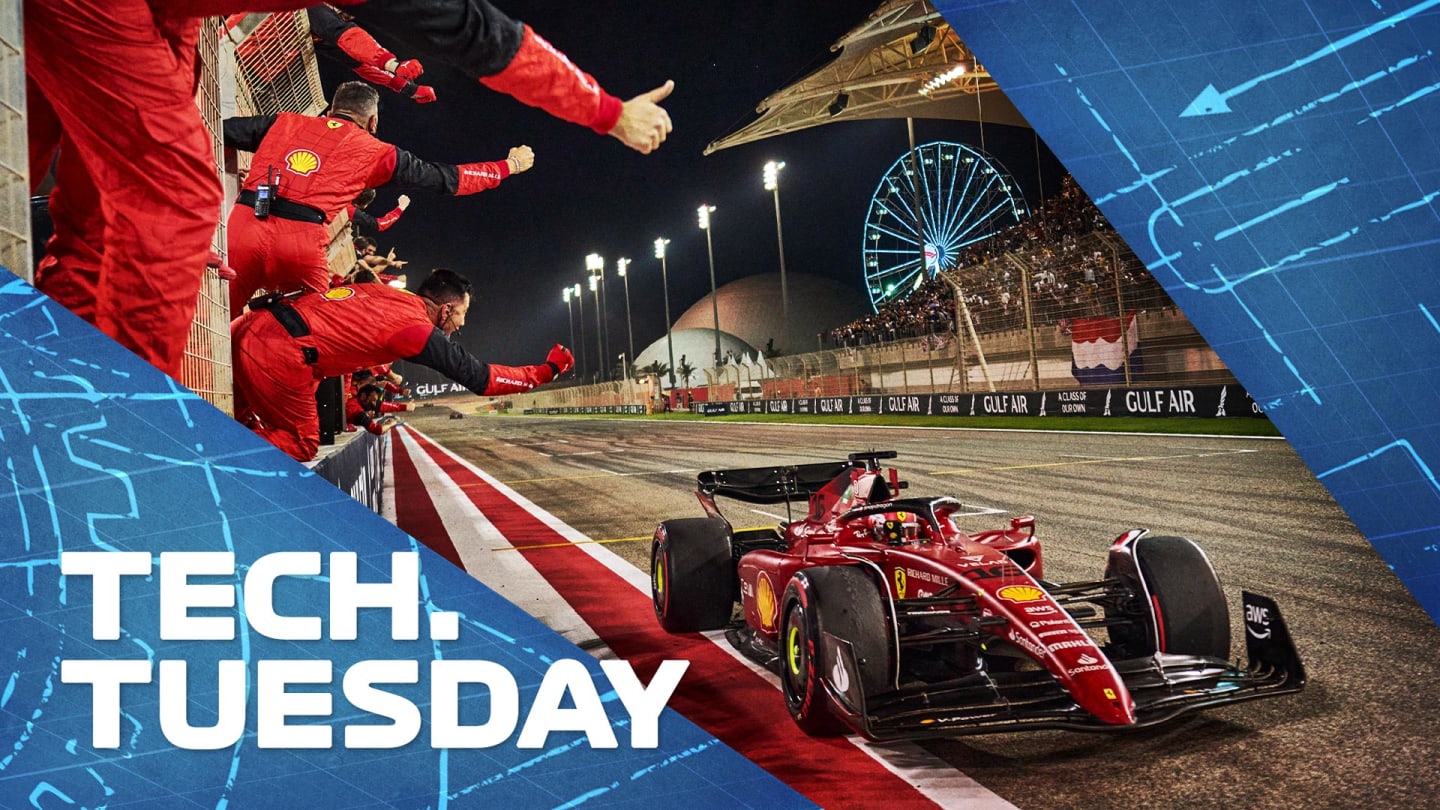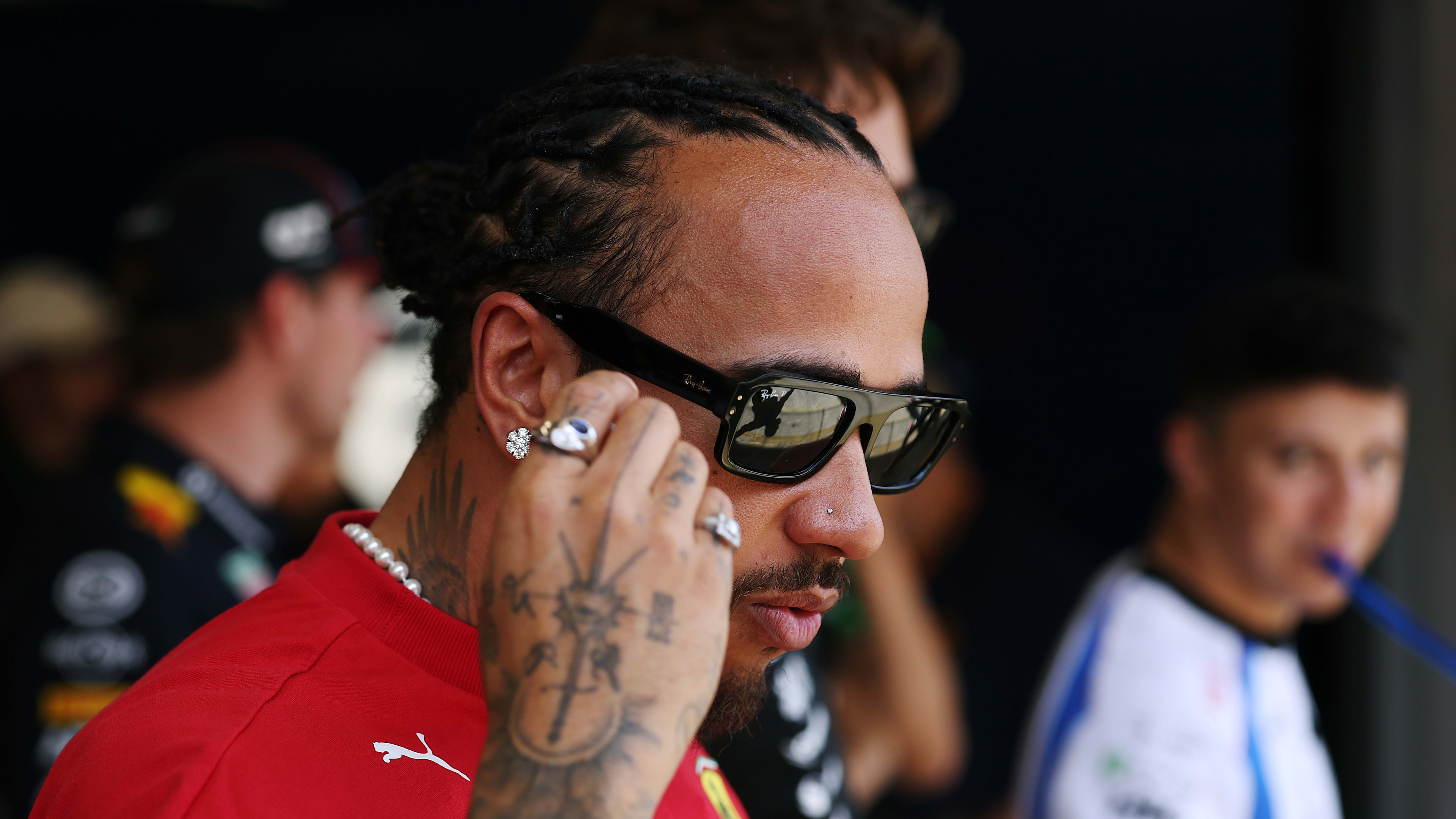
Technical
TECH TUESDAY: The power unit gains behind Ferrari's Bahrain Grand Prix 1-2

Share

In Bahrain, Ferrari sealed one-two and victory with their brand-new F1-75. Mark Hughes looks at one of the key components of their success: the Tipo 066/7 power unit.
It is very clear that Ferrari have created a great car in the F1-75. Even before Max Verstappen’s late retirement in the Red Bull, Charles Leclerc looked to have the race sewn up for the Scuderia. The new car looks to have a good, driveable chassis balance and a very effective power unit.
Even as early as the Barcelona shakedown days, Mercedes’ Toto Wolff had commented that the Ferrari power unit looked the strongest of all. It was an impression which the Bahrain Grand Prix did nothing to refute, especially given the very strong performances of the Ferrari-powered Haas and Alfa Romeo teams.
The Tipo 066/7 power unit is essentially all-new, carrying over only the the ERS energy recovery and battery system introduced at the Russian Grand Prix in September 2021.

Leclerc showed towering pace in Bahrain and Sainz snatched P2 after the Red Bulls retired
Ferrari boss Mattia Binotto – an engine man by training – confirmed this at the car’s launch, saying, “The hybrid is very similar to the one we raced at the end of the season, just a few different sensors for the FIA 2022 requirements. The rest, especially the internal combustion engine, I have to say it's significantly different.
"We've got a new fuel, which is 10 percent ethanol, which changes the combustion a lot, we are all losing more or less 20 horsepower, which means that the combustion itself is quite changed.
"There were a lot of opportunities in development on the power unit and we change it quite a lot, especially in the design on the combustion itself."
)
Team Principal Mattia Binotto became Ferrari's Head of Engine and KERS Operations in 2009
The project has been led by Wolf Zimmermann, who heads up Ferrari’s advanced projects/innovative solutions programme and previously worked at AvL in Graz, an engineering contractor which has done work for several F1 manufacturers. It is believed to feature innovations in intercooler technology (as is also the case with the Mercedes, interestingly) but the biggest advance over last year is rumoured to be the combination of super-fast ignition with a more turbulent intake mixture which allows the flame to spread to the edges of the combustion chamber more quickly. In this way greater advantage can be taken of the maximum 500-bar fuel pressure allowed by the regulations.
Uniquely, it retains the combined turbine/compressor architecture of previous Ferrari hybrid engines. Everyone else now uses the split turbo concept. But big changes have been made in the combustion and despite the 2022 stipulation of E10 fuel Ferrari has made gains over 2021’s unit. That said, last year’s power unit was, by Ferrari’s own admission, around 20bhp down on the Mercedes and Honda.

Ferrari's power unit differs in layout to that of Red Bull and Mercedes
Leclerc took pole in Bahrain by 0.123s from Verstappen. When we look at a detailed comparison of their laps and also how the two cars compared in their electrifying three-lap wheel-to-wheel dice after the first pit stops of the race, we can get a clearer picture of the Ferrari’s strengths.
Although the Ferrari was running more downforce, enabling the Red Bull to be 7 km/h faster through the speed trap in qualifying (with Verstappen second fastest to team mate Sergio Perez through there and Leclerc only 11th), it is evident looking at speed traces around the lap that the Ferrari’s acceleration was stronger.
HEAD-TO-HEAD: Where Leclerc had the edge over Verstappen at the 2022 Bahrain Grand Prix qualifying
This was also evident in the Leclerc/Verstappen dice.
The Ferrari would pull away on the exit of the corners and the Red Bull would only close up towards the end of the straights. This was why all of Verstappen’s overtaking attempts were into Turn 1 and not Turn 4.
When Verstappen’s race engineer reminded him that the T4 overtake was available Verstappen’s response was, “Yes, but I cannot get close enough to him through Turn 1 for that.” The Ferrari’s acceleration advantage was also visible on the exits of Turn 4, 8 and 10, something very much confirmed by GPS speed traces.
Between the exit of Turn 4 and the end of Sector 1 just before Turn 5, the Ferrari gains around 3 km/h on the Red Bull under acceleration. Leclerc is fastest past that line, Verstappen only 14th. Interestingly, the second and third fastest cars at that point – Zhou Guanyu’s Alfa Romeo and Mick Schumacher’s Haas – are also Ferrari-powered.
2022 Bahrain Grand Prix: Leclerc and Verstappen in epic scrap for race lead
There are many reasons why one car may accelerate better than another, of course.
Gearing is one of the most obvious. The Ferrari may have had shorter overall gearing than the Red Bull and there were several parts of the track where Leclerc was a gear up on Verstappen in qualifying. He was pulling eighth gear before the Turn 4 braking zone, where Verstappen was in seventh. In Turn 5, Verstappen downchanges to fifth, Leclerc stays in sixth.
F1 NATION: Inside Ferrari's Bahrain GP victory party
In the entry to the slow turns of 8 and 10, Verstappen is down to second, Leclerc third. Along the straight between Turns 10 and 11 Leclerc again gets into top gear with Verstappen hanging onto seventh. Then into the final T14/15 combined corner Leclerc is in fourth gear at a place where Verstappen is changing down to third.
The gear ratios within the ‘box are chosen by the teams and set for the season (with one change permitted for this year only). Ferrari may have chosen to run a shorter set of ratios in the lower gears. It’s also possible that the engine was so strong that it was possible to accelerate up through the gears more quickly even with comparable gearing. Or some combination of the two.

Car performance analysis from qualifying for the 2022 Bahrain Grand Prix
If the superior acceleration is all down to the power unit, it would enable Ferrari to use more downforce. Because although that would still slow the car’s terminal speed, it is the time taken to get from the beginning of the straight to the end which is important to lap time rather than the maximum speed attained at the end. The latter is of course very important in race conditions.
Given that the power units are effectively frozen in specification until 2026, Ferrari look to have played a master stroke.
YOU MIGHT ALSO LIKE

Video RACE START: Watch the getaway in Spain as Piastri keeps the lead while Norris loses out to Verstappen
FeatureF1 Unlocked MONDAY MORNING DEBRIEF: Verstappen made contact with Russell and Leclerc – but why were they racing each other in the first place?
Report F3: Camara in top form in Barcelona to claim third win in 2025
News Verstappen admits Russell contact ‘shouldn’t have happened’ in Spanish GP as Dutch driver nears race ban threshold



